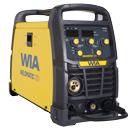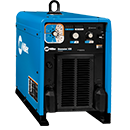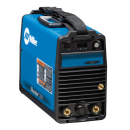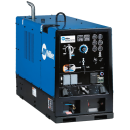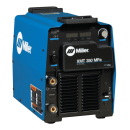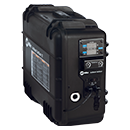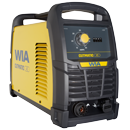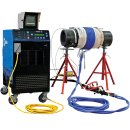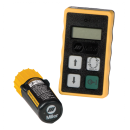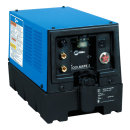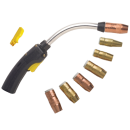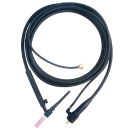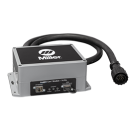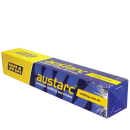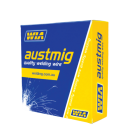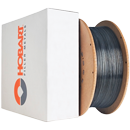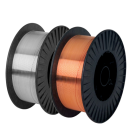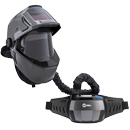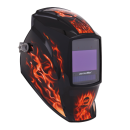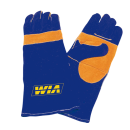Tips for Maximising Welding Operator Comfort and Productivity
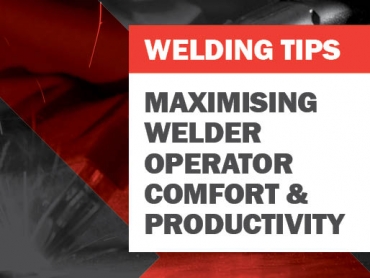
There are numerous issues that play a role in welding operator comfort, including the heat generated by the welding process, the repetitive motions and, at times, cumbersome equipment. These challenges can take a toll, resulting in aches, fatigue and physical and mental stress for welding operators. Choosing the right equipment for the job, utilising tools and accessories designed to improve operator comfort, and following some best practices can help improve comfort and productivity.
Selecting the right MIG gun
Choosing the right GMAW gun for your application or even customising the gun is a critical way to improve operator comfort and achieve better results. A gun’s trigger, handle, neck and power cable design all help determine how comfortable an operator can weld without experiencing fatigue, stress and injury. Below are things to consider when selecting a MIG gun.
Amperage: Choose the most suitable Amp gun for your application. A larger amperage gun may not be the best choice if that amperage rating is not necessary. Choosing a smaller amperage gun when possible can help minimize fatigue and stress on wrists and hands. Consider the application’s duty cycle requirements when selecting a MIG gun. Duty cycle refers to the number of minutes in a 10-minute period that a gun can be operated at its full capacity without overheating. For example, a 60 percent duty cycle means six minutes of arc-on time in a 10-minute span. Most applications do not require the welding operator to use the gun constantly at full duty cycle. In many cases, a higher amperage gun is only needed when the power source is being run continuously.
Handle: Handle options for GMAW guns include straight and curved styles. The right choice typically comes down to the specific process, application requirements and — most often — operator preference. Usually a smaller handle tends to be easier to hold and manoeuvre. While operator comfort and preference is important, handles must also meet the gun and application’s amperage and duty cycle requirements. A straight handle provides flexibility by allowing for the trigger to be mounted on top or bottom of the handle. Putting it on top can improve operator comfort in high-heat applications or for those that require long welds.
Trigger: Look for a trigger that doesn’t require more pull force than necessary to maintain the arc, to minimize stress on the operator. Also, locking triggers are a good option to alleviate stress on the welding operator’s finger caused by grasping, sometimes called “trigger finger.” A locking trigger, as its name implies, can be locked into place. This feature allows the welding operator to create long, continuous welds without having to hold the trigger the entire time. Locking triggers also help distance the welding operator from the heat generated during welding, making them well-suited for high amperage applications.
Neck: Rotatable and flexible necks are available in various lengths and angles, and can be adjusted to meet specific application needs, offering choices to help reduce operator strain. Joint access, gun amperage and duty cycle required for an application are important considerations when choosing a gun neck. For example, a longer gun neck can improve operator comfort when the application requires a long reach. A flexible neck can do the same when accessing joints in a tight corner. The best choice for pipe welding might be an 80-degree neck, while a 45- or 60-degree neck might be better suited for welding in the flat position. Rotatable necks allow welding operators to rotate the neck as needed, such as in out-of-position or overhead welding. These numerous neck options can result in reduced opportunity for operator fatigue, strain and injury.
Power cable: The power cable adds weight to the gun and can also add clutter to the workspace. Therefore, smaller and shorter cables are recommended, as long as they meet the needs of the application. Not only are shorter and smaller cables typically lighter and more flexible — to ease the fatigue and strain on a welding operator’s hands and wrists — but they also help reduce clutter and tripping hazards in the work area.
Use correct positioning and form
Repetitive strain or prolonged uncomfortable postures can result in operator injury — or even the need for costly and time-consuming rework due to poor quality welds. Whenever possible, place the workpiece flat and move it into the most comfortable position. It’s also important to maintain a clean working environment. In addition, operator comfort can be maximized by using stable posture and avoiding awkward body positioning, and by not working in one position for long periods. When welding in a seated position, operators should also have the workpiece slightly below elbow level. When the application requires standing for long periods, use a foot rest.
Maximizing comfort
Having the right equipment, that are easy to operate, promote operator comfort, and utilising proper welding technique and form are all important steps toward achieving a comfortable, safe work environment for welding operators. Lightweight welding guns with appropriate handle and neck designs for the job and for the operator can help achieve safe and productive results. The reduction of heat stress, wrist and neck fatigue and repetitive motions can also help decrease overall physical and mental stress for welding operators. To achieve optimal results, consider various styles of MIG guns and consumables on offer and select one that is most suited to the application.






